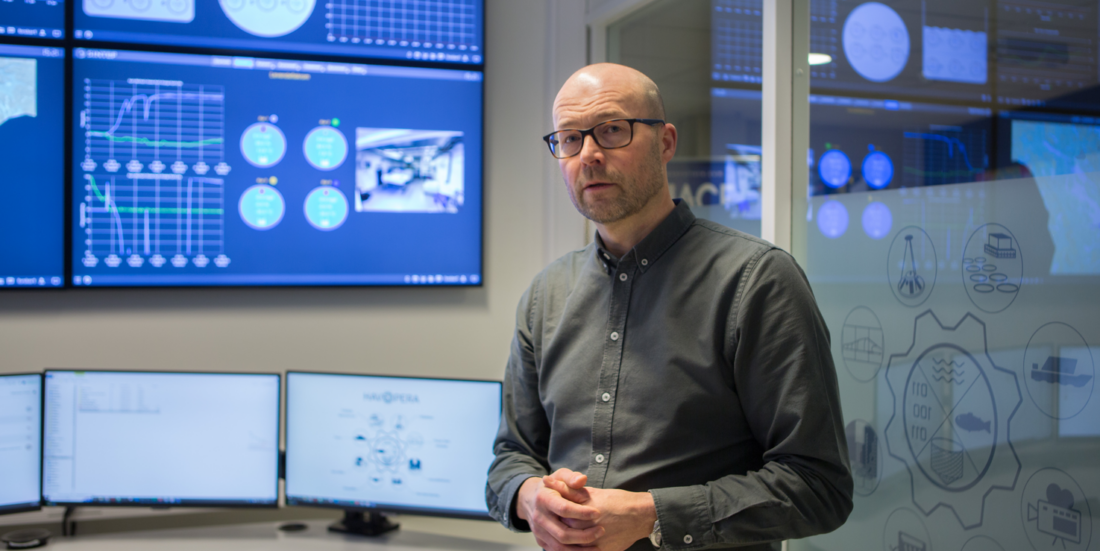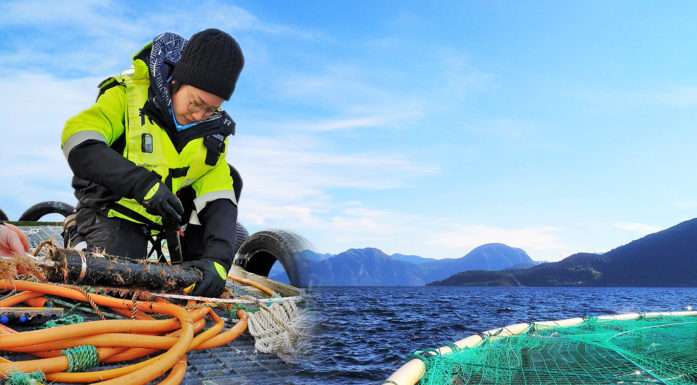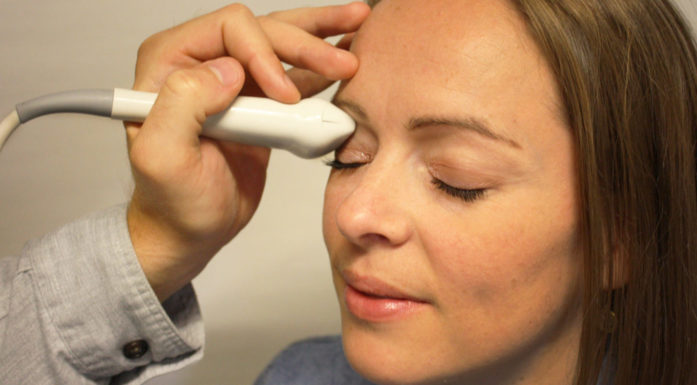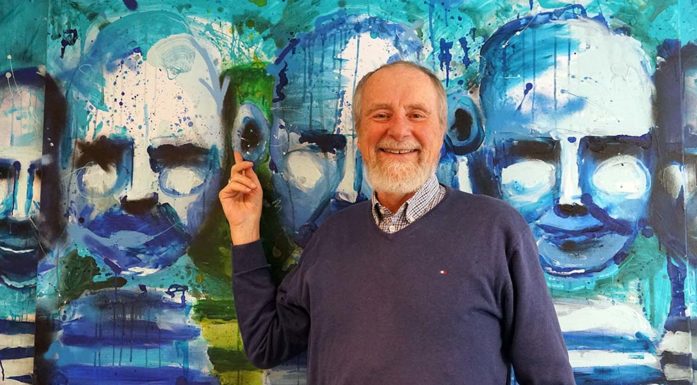Digital twins offer us access to new knowledge
Now, in 2023, there are almost no limits to how much data we can collect and store away. But what can we use all this information for, and how do we find out what the data can tell us?
A team of researchers at SINTEF has developed data simulation systems that make it easier to understand exactly what enormous volumes of data are telling us. Their aim has been to convert the information from data capture processes in complex systems into knowledge, and then present it in such a way that you don’t need a PhD to understand it.
From a control room at SINTEF’s offices in Brattøra in Trondheim, Research Manager Jan Tore Fagertun and his colleagues are currently demonstrating how so-called digital twins can be utilised in the aquaculture sector.
The digital twin is being developed at the SFI Exposed research centre as part of a project called RACE Digitalcage. When great distances make it impossible to be ‘hands on’ all the time, it becomes even more important to have good control. As part of research into aquaculture in exposed locations (fish farming in areas subject to high winds and strong currents), SINTEF researchers have been searching for systems that offer opportunities not only for optimal monitoring, but also for the presentation and use of monitoring data. The work is being headed by Jan Tore Fagertun and Esten Ingar Grøtli who work at SINTEF Ocean and SINTEF Digital, respectively.
What is a digital twin?
The term ‘digital twin’ is becoming familiar to many people. But what does it really mean? In order to explain, we can use an example that everyone can relate to – the human body.
“Imagine that there exists a data model of your body”, says Fagertun. “It looks just like you, both inside and out, and you can turn and rotate the image of your identical twin and view it from any angle you like. If you had enough sensors attached to your body, and the data from these were transferred to the model in real time, the twin on the screen would copy all your movements precisely”, he says.
Then imagine that you found yourself in an inaccessible place with no transport links. Your doctor would be able to call the model, your digital twin, in for a consultation. The connections with existing data and other measurements would make it possible for the doctor to check if everything was normal with your heart rhythm, the load on your skeleton, your medication, digestion and quality of sleep. The screen twin would signal any discrepancies with a visible notification.
The doctor, or yourself even, would be able to compare any abnormalities with historical data in order to identify links and offer explanations for your problems. What did you eat in the days before you got stomach ache? Do your sleepless nights share any common features? The twin could have been used to anticipate problems that might have arisen under certain circumstances, and could have been connected with other relevant data.
Making it possible to see ‘everything’
In the case of an aquaculture facility located far out at sea, it is very important to have the big picture. With an adequate array of robust sensors and measurement systems, a real-time digital twin can become so detailed that it can present the entire facility in a single control room – providing condition status at all times. The digital twin doesn’t just display the sea cages and the facility construction. It shows the nets, the fish, the ROV as it moves around the nets, the various vessels performing tasks in and around the facility, as well as details of the physical environment such as currents, waves and tidal movements.
“A digital twin incorporating real-time simulation makes it possible to answer questions that are of key importance to those responsible for managing an aquaculture facility”, explains Fagertun, who goes on to give some specific examples.
Which section of a net has been inspected by the ROV, and where has it identified discrepancies? How do the fish move under given conditions? What position is the net taking up under current weather conditions? What is the load response, and how are the vulnerable components of the construction responding to weather conditions? The digital twin can communicate answers in an easily comprehensible form, because it gives us a visual representation of what we are used to observing in the physical world, and not just a set of data consisting of a mass of numbers.
“The digital twin has the ability to present a complex stream of digital images in real time and can offer much better observation conditions that in the real world”, says Fagertun. “For example, it’s often difficult to observe conditions inside nets from the edge of the cages, and video cameras are sometimes limited due to contaminated water or a high density of fish. In a stream of digital images, not only do you have perfect vision, but you can also ‘clean’ an image and filter out disruptive elements, giving you a closer and more detailed view of whatever it is you’re interested in”, he says.
Easier to find the answers
If weather and wave-condition forecasts are input to the digital twin, together with data related to historical production, the twin can predict how production in an aquaculture facility will develop over the short and long term. It will also be able to offer valuable decision support – informing the operator about working conditions at the cage edges during a planned operation, and about the stresses that might be exerted on the fish if a delousing treatment is carried out during a given weather window.
Will it be possible for a net to be inspected by the ROV under the sea current conditions anticipated for next week? Once an operation has started, the digital twin can monitor progress, predict the outcome, and offer decision support to those responsible for deciding whether it should continue or be suspended. The twin can perform simulations of responses such as the roll and pitch of a vessel and movements of the facility, and can predict whether conditions are suitable for working on the cage edges.
“When future aquaculture operations are carried out in exposed locations at great distances from shore, with cages containing enormous numbers of fish, there will be a need for much more decision support, monitoring and autonomous operation than is the case today”, says Fagertun, who believes that digital twins will offer the solution.
The digital twin currently being demonstrated by the researchers in the control room ‘Havopera’ at Brattøra, derives its data from SINTEF ACE, which is a large-scale laboratory located at sea offshore Trondheim. This is one of the many technologies developed by SINTEF Ocean in the seven years since the launch of the innovation-driven SFI Exposed research centre.





